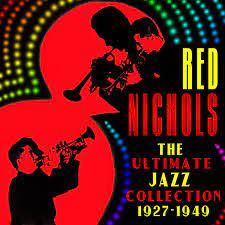
Daily Dose Of Jazz…
Rolland Pierce “Rollie” Culver was born on October 29, 1908 in Fond du Lac, Wisconsin. His first entry into professional entertainment was as a tap dancer, but after 1930 he concentrated on drumming.
He played in the territory band of Heinie Beau for most of the 1930s, then, in 1941, began playing with Red Nichols. He drummed behind Nichols for more than twenty years, working with him right up to Nichols’s death in 1965.
Other associations include work with Jack Delaney and Raymond Burke. He became a session musician for film soundtracks. Drummer Rollie Culver transitioned on December 8, 1984 in Culver City, California.
More Posts: drums,history,instrumental,jazz,music
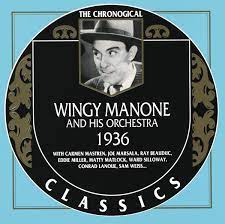
Daily Dose Of Jazz…
Conrad Lanoue was born on October 18, 1908 in Cohoes, New York. He started on piano when he was ten years old and attended the Troy Conservatory.
Beginning his career in his 20s, he played piano at hotels in his hometown. Conrad recorded with Red McKenzie in 1935, and under the combined leadership of trumpeter Eddie Farley and trombonist Mike Riley in 1935–36. During the 1930s he worked for Louis Prima, then Wingy Manone from 1936 to 1940 followed by playing with pianist Joe Haymes.
From the 1940s to the 1960s, he was a member of bands led by Lester Lanin, Charles Peterson, and Hal Landsberry. He also wrote big band arrangements. Pianist and arranger Conrad Lanoue, who never recorded as a leader, retired in 1968 due to illness and transitioned in Albany, New York on October 15, 1972.
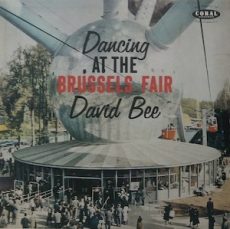
Daily Dose Of Jazz…
David Bee was born on October 17, 1903 in Brussels, Belgium. He was a multi-instrumentalist adept on clarinet, harp, piano, and alto and tenor saxophone. For a year in 1924 he played with the group Bistrouille ADO before co-founding an ensemble with Peter Packay called Red Beans. The group toured widely throughout western Europe.
After returning to Belgium, David joined Robert De Kers’s band, and also played in Paris, France at Chez Florencewith Benny Carter and Willie Lewis. He recorded with Gus Deloof in the early Forties and after World War II he played with Robert Bosmans and Chas Dolne later in the decade. He led his own bands and groups at various times in the 1950s and continued recording late into the decade and the 60s.
As a composer, Bee pennedr the tunes High Tension recorded by Luis Russell) and Obsession recorded by Ted Heath and Reg Owen.
Clarinetist, harpist, pianist, alto and tenor saxophonist, arranger and composer David Bee, also known as Ernest Craps, Ernie Sparks, and Manuel Travo, transitioned in 1992.
More Posts: arranger,clarinet,composer,harp,history,instrumental,jazz,music,saxophone
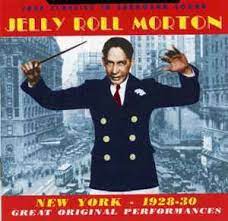
Daily Dose Of Jazz…
Lee L. Blair was born on October 10, 1903 in Savannah, Georgia and was a left-handed autodidact on banjo, aside from a few lessons taken from Mike Pingitore, the banjoist for Paul Whiteman. He played and recorded in New York City, New York with Thomas Morris’s Seven Hot Babies in 1926, then played with Charlie Skeete in 1926-28, before playing and recording with Jelly Roll Morton’s Red Hot Peppers in 1928-30.
In the Thirties he went on to play with Billy Kato, then played and recorded with Luis Russell and Louis Armstrong from 1935 to the end of the decade. He worked part-time in music through the 1940s, then joined Wilbur De Paris’s New New Orleans Jazz Band in the 1950s at Jimmy Ryan’s Club on West 52nd Street in New York City.
The summer of 1957 had him touring Africa with the DeParis band for the State Department. During the 1960s he played less, concentrating on raising chickens on his farm in Belmore, Long Island, but appeared at the 1964 World’s Fair in a trio with Danny Barker and Eddie Gibbs. He freelanced around New York with Hank Duncan and others until his death.
He never recorded as a leader, but appears on record with Morris, Morton, Russell, Armstrong, and De Paris, as well as with Dick Cary, Pee Wee Erwin, and Leonard Gaskin among others. He is honored in the jazz section of the Georgia Music Hall of Fame in Macon, GA.
Banjoist and guitarist Lee Blair, who never recorded as a leader, transitioned on October 15, 1966 in New York City.
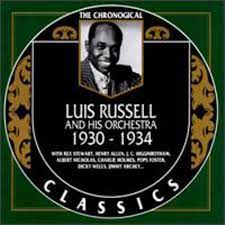
Daily Dose Of Jazz…
Greely Walton was born in Mobile, Alabama on October 4, 1904. He played violin in his youth before settling on saxophone, and went on to study music at the University of Pittsburgh in the 1920s.
During the 1920s he first worked with Elmer Snowden, then with Benny Carter. For seven years beginning in 1930 he played with Luis Russell during which time they served as Louis Armstrong’s backing ensemble. After leaving Russell in 1938 he worked with Vernon Andrade, and in the Forties he worked with Horace Henderson, Cootie Williams, and Cab Calloway.
From 1945-47 he acted as musical director for The Ink Spots, and played with Noble Sissle and Sy Oliver towards the end of the decade. In the Fifties he worked in radio and television in the 1950s.
Retiring from music before the end of the decade, tenor saxophonist Greely Walton transitioned on October 9, 1993 in New York City.
More Posts: history,instrumental,jazz,music,saxophone


